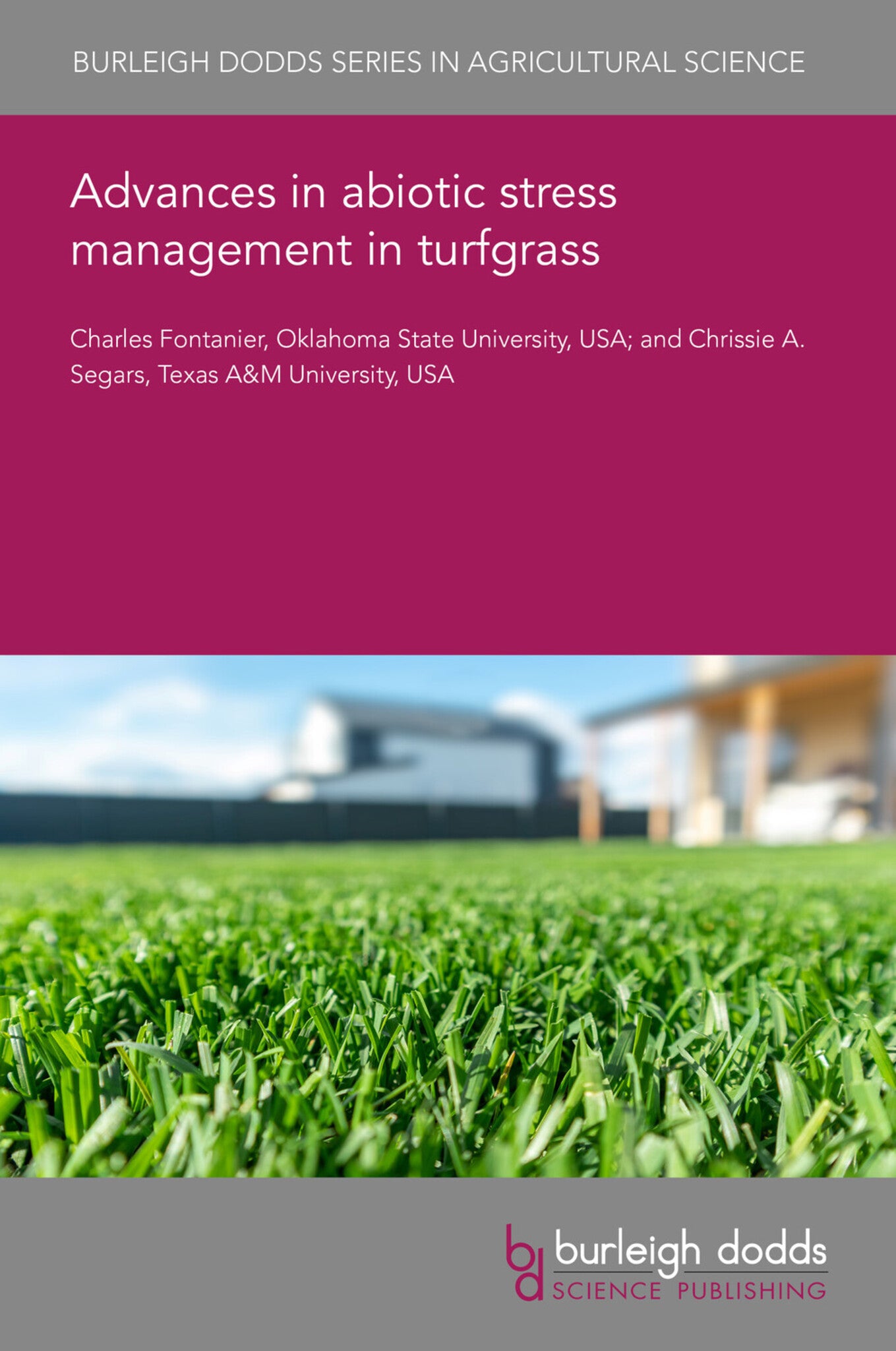We're sorry. An error has occurred
Please cancel or retry.
Advances in abiotic stress management in turfgrass

Some error occured while loading the Quick View. Please close the Quick View and try reloading the page.
Couldn't load pickup availability
- Format:
-
23 January 2023

Abiotic stresses of turfgrasses involve any environmental condition which limits plant growth, turfgrass quality, and system functionality. Commonly observed abiotic stresses in turfgrass systems include drought, high temperature, low temperature, low irradiance, traffic, salinity, and chemical phytotoxicity. Managing abiotic stresses with reduced irrigation, fertilizer, energy, and pesticides has become critical to the sustainability of the turfgrass industry. In this chapter, we aim to describe the current literature related to abiotic stress management in turfgrasses with an emphasis on sustainability of turfgrass systems. To this end, we have organized the discussion into four approaches to sustainable abiotic stress management: 1) managing growth, 2) moderating the environment, 3) enhancing stress tolerance, and 4) masking stress response.

SCIENCE / Life Sciences / Horticulture, Commercial horticulture, TECHNOLOGY & ENGINEERING / Agriculture / Sustainable Agriculture, TECHNOLOGY & ENGINEERING / Agriculture / Agronomy / Crop Science, Agronomy and crop production, Sustainable agriculture, Agricultural science, Plant biology

- 1 Introduction
- 2 Approaches to sustainable abiotic stress management
- 3 Detecting abiotic stress and data-driven decision-making for managing abiotic stress
- 4 Conclusion and future trends
- 5 Where to look for further information
- 6 References



